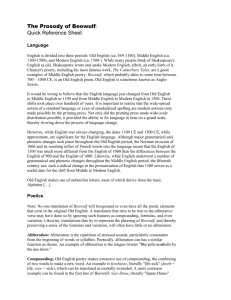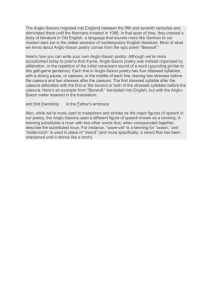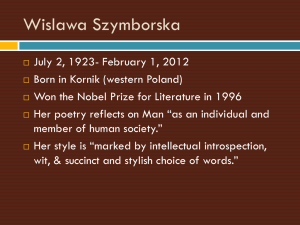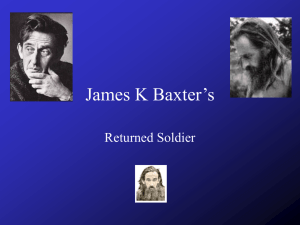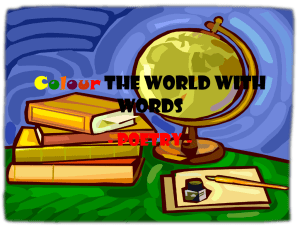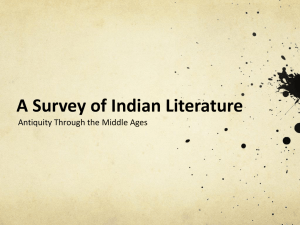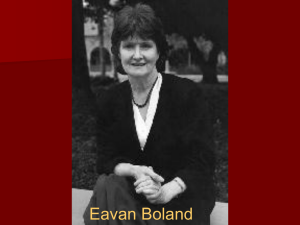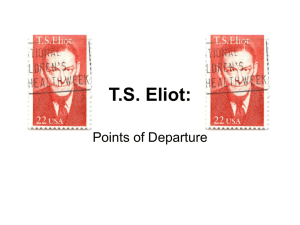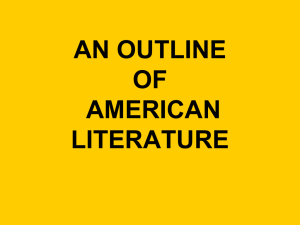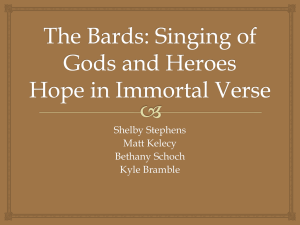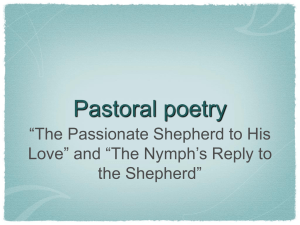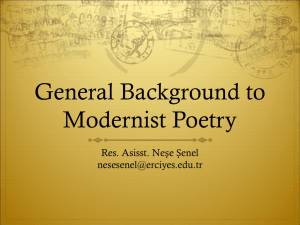Alliterative Poetry
advertisement
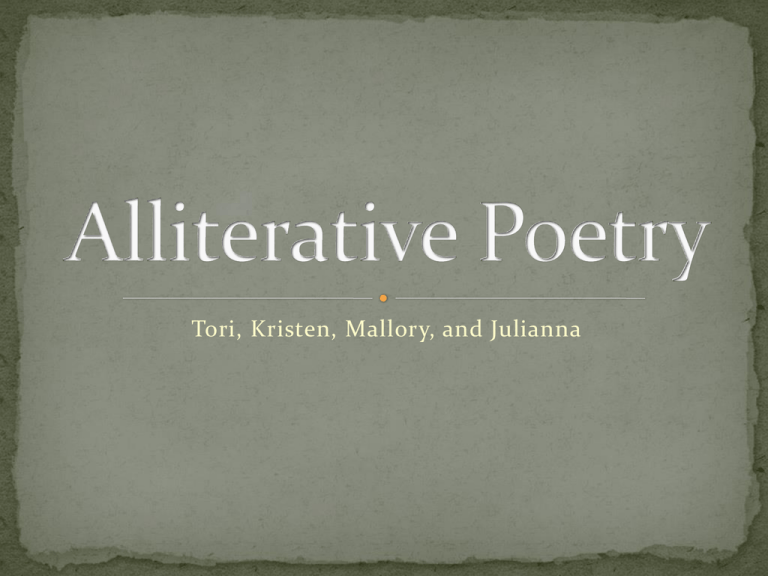
Tori, Kristen, Mallory, and Julianna Modern Alliterative Poetry: Alliteration: The repetition of similar sounds in a series of words or phrases Assonance Ex. On a proud round cloud in white high night Consonance Ex. Peter Piper picked a pickled pepper Anglo Saxon Alliterative Poetry: uses alliteration as the main structuring device to join lines of poetry unlike other devices that uses rhyme Forming of this Alliterative Any of the stressed syllables may alliterate except the last syllable For example: Lade ne letton. Leoht eastan com. Verse: The line has two verses divided by a boundary called a caesura. Each of the two halves contain two stressed syllables, called lifts, and two or more groups of unstressed syllables, called drops. An alliterative pattern must be carried over across the caesura Has a distinctive set of rhetorical devices most common is kenning Examples of drops and lifts Germanic languages Some poetry that uses alliteration include: Muspilli Heliand Poetic Edda Also found in other languages as well: Kalevala Kalevipoeg J.R.R. Tolkien- “Turin Turambar”, “Song of the Mounds of Mundberg”, “The Lord of the Rings” He majored in Anglo Saxon and Middle English Style unknown in modern English literature This style dominated English literature from Chaucer’s time until early 20th century “Song of the Mounds of Mundburg”: We heard of the horns in the hills ringing, the swords shining in the South-kingdom. Steeds went striding to the Stoningland as wind in the morning. War was kindled. Sir Gawain and the Green Knight Written during “Alliterative Revival -14th century Followed the alliterative verse style Except made a few changes called bob and wheel Gawain Translation (bob) ful clene (wheel) for wonder of his hwe men hade set in his semblaunt sene he ferde as freke were fade and oueral enker grene (bob) full clean. (wheel) Great wonder of the knight Folk had in hall, I ween, Full fierce he was to sight, And over all bright green. Germanic Anglo-Saxon Poetry Old English language Alliterative Poetry used instead of usual rhyme schemes Usually three alliterations in every line Ex. Now Beowulf bode in the burg of the Scyldings Kennings (epithets) are also used to enhance the poetry “mail shirt” for armor “dwelling place” for residence In the translation by Seamus Heaney alliteration is sometimes only in half the line These are examples of proper ones: The fortunes of war/ favoured Hrothgar (l.64) The highest in the land/ would lend advice (l.172) And find friendship/ in the Father’s embrace (l.188) Heaney tries to use many analogies like the original Lord of the nation could be: “ring-giver” “treasure-giver” “his people’s shield” “shepherd”
